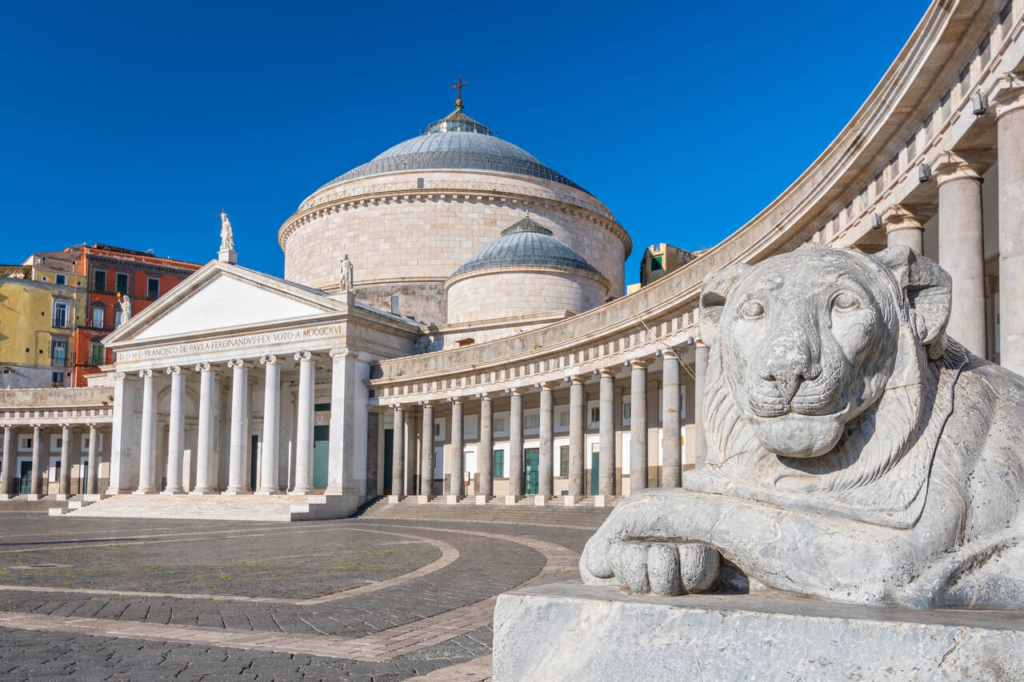Naples, a city brimming with history, culture, and vibrant energy, offers travelers a unique blend of ancient and modern experiences. From its stunning historical sites to its picturesque coastlines, Naples is a treasure trove of attractions that will captivate any visitor. In this article, we’ll explore the top 5 best places to visit in Naples, providing you with detailed insights and travel tips to make your journey unforgettable. Whether you’re a history buff, a foodie, or simply looking to soak in the Italian sun, Naples has something for everyone.
1. The Historic Center of Naples (Centro Storico)

The Historic Center of Naples, or Centro Storico, is a UNESCO World Heritage site and a must-visit for anyone exploring the city. This area is a living museum, where narrow, winding streets are lined with ancient buildings, churches, and monuments that tell the story of Naples’ rich history. The historic center is a maze of alleys filled with hidden gems, from underground catacombs to baroque churches, making it a perfect starting point for your Naples adventure.
Things to See and Do:
- Spaccanapoli: This long, narrow street slices through the heart of the historic center, offering a glimpse into the everyday life of Neapolitans. As you walk along Spaccanapoli, you’ll pass by historic buildings, quaint shops, and bustling piazzas. Don’t miss the chance to visit Santa Chiara, a stunning Gothic church with a serene cloister filled with colorful majolica tiles.
- Naples Cathedral (Duomo di Napoli): The Duomo is one of the most important churches in Naples, dedicated to the city’s patron saint, San Gennaro. The cathedral is a blend of different architectural styles, reflecting its long history. Inside, you can admire the beautiful frescoes, marble statues, and the relics of San Gennaro, which are said to protect the city from disasters.
- San Gregorio Armeno: This street is famous for its artisan shops selling nativity scenes and figurines, a tradition that dates back centuries. Visiting San Gregorio Armeno during the holiday season is a magical experience, but the shops are open year-round, offering unique souvenirs to take home.
Travel Tips:
- Best Time to Visit: The historic center can get crowded, especially during the summer months. To avoid the crowds, visit early in the morning or later in the afternoon.
- Dress Comfortably: The streets are narrow and often cobblestoned, so wear comfortable shoes for walking.
- Stay Hydrated: Naples can get hot, especially in the summer, so carry a water bottle with you.
2. Pompeii and Mount Vesuvius

No trip to Naples would be complete without visiting the ancient city of Pompeii and the iconic Mount Vesuvius. Pompeii, once a thriving Roman city, was buried under volcanic ash when Vesuvius erupted in AD 79. Today, it’s one of the most well-preserved archaeological sites in the world, offering a fascinating glimpse into Roman life nearly 2,000 years ago.
Things to See and Do:
- The Ruins of Pompeii: As you walk through the streets of Pompeii, you’ll feel like you’ve stepped back in time. Explore the well-preserved ruins of homes, temples, theaters, and public baths. Highlights include the Forum, the heart of the city’s political and social life, and the Villa of the Mysteries, known for its stunning frescoes depicting mysterious rituals.
- Mount Vesuvius: After exploring Pompeii, take a trip to the top of Mount Vesuvius. The hike to the crater is moderately challenging but offers spectacular views of the Bay of Naples and the surrounding countryside. Standing at the edge of the crater, you can peer into the depths of this still-active volcano and marvel at its power.
Travel Tips:
- Guided Tours: Consider booking a guided tour of Pompeii to fully appreciate the historical significance of the site. Knowledgeable guides can provide context and insights that you might miss on your own.
- Bring Essentials: The site of Pompeii is vast, and there’s little shade, so bring sunscreen, a hat, and plenty of water.
- Hiking Vesuvius: The hike to the crater of Vesuvius can be strenuous, so wear sturdy shoes. The path is rocky and uneven in places, but the panoramic views are well worth the effort.
3. The Royal Palace of Naples (Palazzo Reale)

The Royal Palace of Naples is a stunning example of Italian Baroque architecture and a symbol of the city’s royal past. Located in Piazza del Plebiscito, the Royal Palace was once the residence of Spanish and Bourbon monarchs who ruled Naples. Today, it’s a museum that offers a glimpse into the opulent lifestyle of the Neapolitan royalty.
Things to See and Do:
- The Grand Staircase: As you enter the palace, you’ll be greeted by the majestic grand staircase, a masterpiece of marble and stucco that sets the tone for the rest of the tour.
- The Throne Room: One of the most impressive rooms in the palace is the Throne Room, with its lavish decorations, crystal chandeliers, and gold accents. The room reflects the grandeur and power of the monarchs who once ruled Naples.
- The Royal Apartments: The apartments are furnished with period pieces, including gilded furniture, tapestries, and artwork. Each room tells a story of royal life, from the private chambers to the grand reception halls.
Travel Tips:
- Opening Hours: The palace is open every day except Wednesdays. Check the official website for up-to-date information on hours and ticket prices.
- Combined Tickets: If you’re interested in exploring more royal residences, consider purchasing a combined ticket that includes the Royal Palace of Naples and the nearby Palace of Caserta, known as the “Versailles of Italy.”
- Photography: Photography is allowed in most areas of the palace, but be mindful of the signs indicating where it is prohibited.
4. Naples National Archaeological Museum (Museo Archeologico Nazionale di Napoli)

For history enthusiasts, the Naples National Archaeological Museum is a must-visit. It houses one of the most extensive collections of Greco-Roman antiquities in the world, including artifacts from Pompeii and Herculaneum. The museum is a treasure trove of ancient art, sculptures, mosaics, and more, offering a deep dive into the history of the region.
Things to See and Do:
- The Farnese Collection: This collection of ancient Roman sculptures is one of the highlights of the museum. It includes the famous Farnese Hercules and the Farnese Bull, both of which are masterpieces of ancient art.
- The Pompeii and Herculaneum Exhibits: The museum’s Pompeii and Herculaneum exhibits feature a vast array of artifacts, from frescoes and mosaics to everyday objects. These exhibits provide a fascinating insight into the daily life of the people who lived in these ancient cities before they were destroyed by Vesuvius.
- The Secret Cabinet: This section of the museum is dedicated to erotic art from Pompeii and Herculaneum. While it might not be suitable for all audiences, it’s an interesting look at the more private aspects of Roman life.
Travel Tips:
- Plan Your Visit: The museum is large, so give yourself plenty of time to explore. If you’re particularly interested in Pompeii and Herculaneum, you might want to spend most of your time in those sections.
- Guided Tours: The museum offers guided tours in multiple languages, which can enhance your understanding of the exhibits.
- Avoid the Crowds: Visit early in the morning or later in the afternoon to avoid the busiest times.
5. Castel dell’Ovo (Egg Castle)

Castel dell’Ovo, or Egg Castle, is one of the oldest fortifications in Naples and a key landmark along the city’s waterfront. The castle’s name is derived from a legend that the Roman poet Virgil placed a magical egg in the foundation, which if broken, would lead to the destruction of the castle and the city. Today, Castel dell’Ovo offers stunning views of the Bay of Naples and the city skyline, making it a popular spot for both locals and tourists.
Things to See and Do:
- The Terrace: The highlight of any visit to Castel dell’Ovo is the panoramic terrace, which offers breathtaking views of the Bay of Naples, Mount Vesuvius, and the island of Capri. It’s an ideal spot for taking photos or simply enjoying the scenery.
- The Sea Walk: Surrounding the castle is a scenic promenade, perfect for a leisurely stroll. The area is dotted with cafes and restaurants where you can enjoy a meal with a view.
- Historical Exhibits: Inside the castle, you’ll find a series of exhibitions that delve into the history of the fortress and its role in the defense of Naples. The exhibits are informative and provide context for the castle’s significance.
Travel Tips:
- Free Admission: Unlike many historic sites in Naples, admission to Castel dell’Ovo is free, making it an excellent option for budget-conscious travelers.
- Best Time to Visit: The castle is particularly beautiful at sunset when the light casts a golden glow over the bay and the city.
- Accessibility: The castle’s ancient structure means that it may not be fully accessible to those with mobility issues, so be prepared for some stairs and uneven surfaces.
Keep reading Top 5 Best Places to Visit in Rome, Italy








